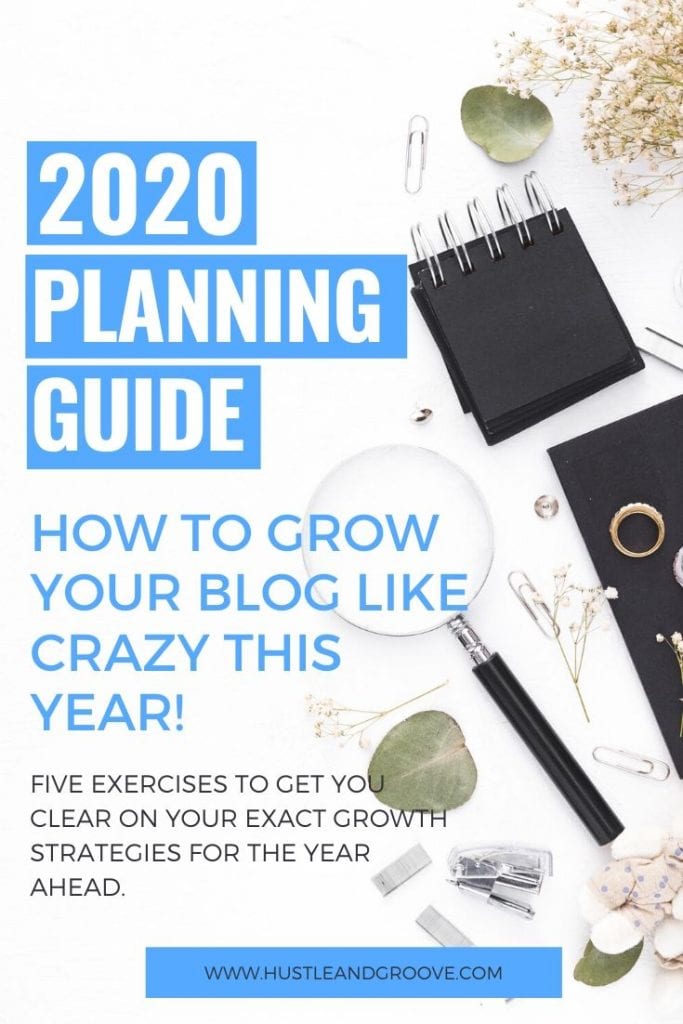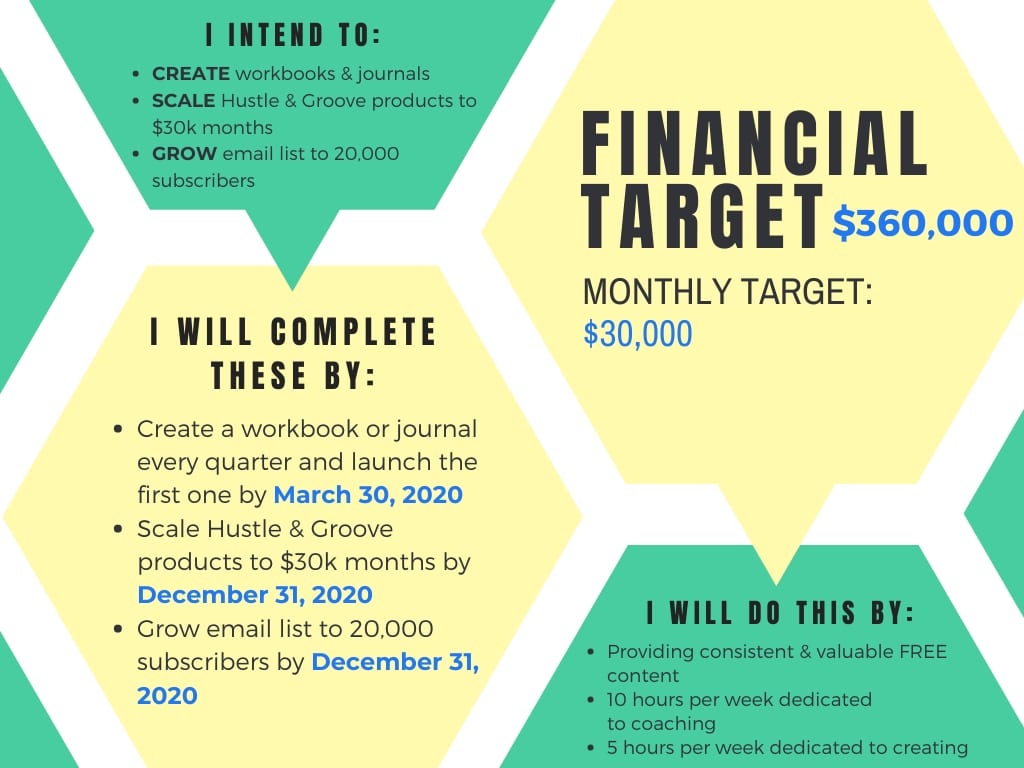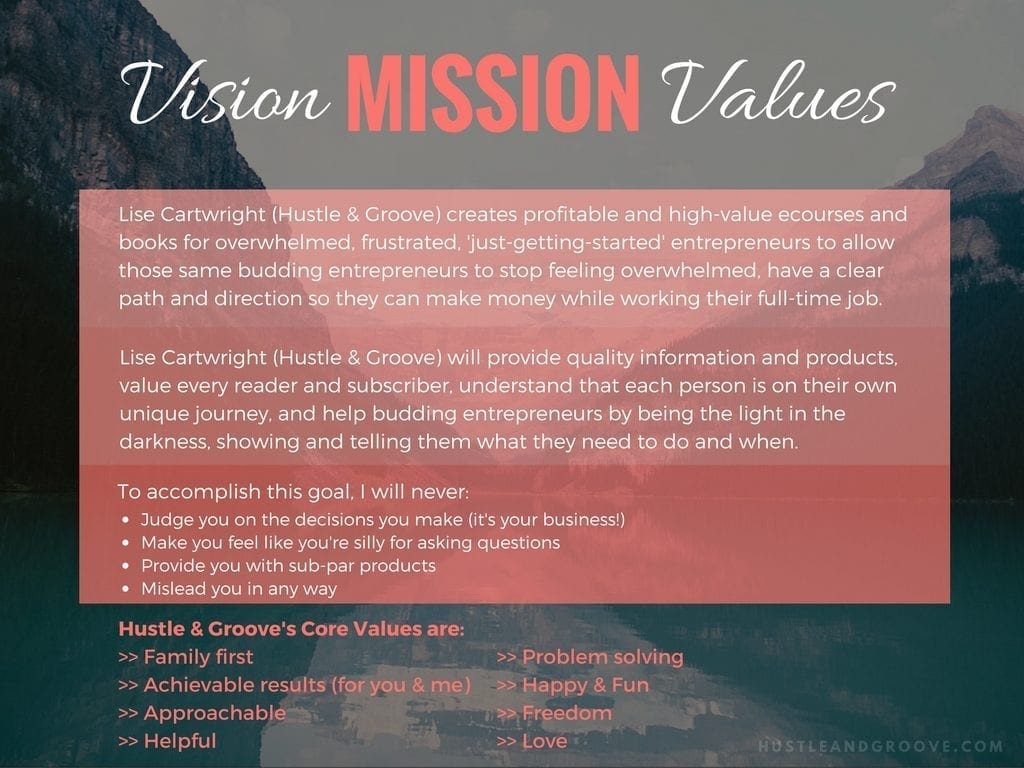Learn how to run your own Planathon and kick off next year with a bang!
Did you know that nothing (good) happens without a bit of planning? In fact, in my experience, I’ve found that when I’ve had the most success, whether in business or my personal life, it’s been because I was taking action on a plan I had in place…
And the times where things were kinda ‘meh’ — well they lacked planning.
Every year, around the end of October, beginning of November, I take part in Amber McCue’s Planathon. She runs a blog called NiceOps.com too that you definitely need to check out.
I also picked up Amber’s Fresh Start planning guide and I am more than addicted to this process.
In the last few years, I’ve followed Chris Guillebeau’s Annual Review process, which I’m still doing, but now I’m incorporating the Planathon into this process, and it all starts in November aka right now.
I have some serious goals to reach with one of my biggest personal goals being to start a family with my hubby. That requires A LOT of planning! We both want to be stay-at-home-parents, which means we need to both be earning a certain level of income to be able to do this.
Of course, there are lots of other things that go into baby planning, but the financial aspects are definitely top of mind as we head into 2020.
Table of Contents
Planathon 101 — Reflecting on the past year
Before we get into the gist of running your own Planathon, let’s do a bit of reflection a la Chris Guillebeau style…
Grab a pen and paper, or a notebook, whatever you’re going to use throughout this Planathon.
Ask yourself the following questions (and answer honestly):
- What went well this past year?
- What didn’t go so well?
- What do you want to change?
These questions can be for both your personal and business life, and you might find it helpful to keep the two categories separate, either on a different page, in a different notebook, or a different file. Whatever works for you.
Personally, I use Evernote and have two notebooks for this process, one that focuses on personal stuff and the other on business stuff. Just helps keep the two separate for me, as I try to not have too much overlap, as things can get kinda tricky when they do!
Give yourself 30-60 minutes to do this and no self-editing. Just write what pops into your head. This is your reflection, no-one else is going to see it (unless you want to share it).
Once you’ve finished with your reflection, it’s time to start your Planathon!
Run Your Own Planathon
 Unfortunately, you can’t join Amber’s Planathon anymore (you’ll have to watch out for next year’s one, it’s awesome!), as it’s now closed, but I’m going to walk you through the gist of it here.
Unfortunately, you can’t join Amber’s Planathon anymore (you’ll have to watch out for next year’s one, it’s awesome!), as it’s now closed, but I’m going to walk you through the gist of it here.
The process is going to take you 5 days to complete, so set aside some time in your calendar. It should only take you about 30-60 minutes each day to do.
Of course, you could do this over a weekend, and this is entirely your choice, but if you’re trying to balance a lot of stuff, stick with the 5 days.
You’ll thank me later 🙂
Day #1: Goals, Vision & Planning
Before you get started, I want you to do one thing — move to a space where you can concentrate. That might mean you need to jump in your car and go for a drive, head to a cafe, or shut the door to your bedroom.
Whatever that is for you, please do this before you attempt any day’s activities. Things will go a lot smoother for you 🙂
You’re also going to need a few things:
- A notebook or Google Doc or Evernote notebook
- Coloured pens or pencils or paints (whatever floats your boat and allows you to be creative!)
- Blank pieces of paper
- Anything else you need to get inspired
Step 1: Goal Card
Day one is all about setting goals, defining your vision and planning for the rest of the 5 days and beyond.
The first thing that you’re going to do today is to create a goal card. This can be on actual card, done up in Canva or however you wanna do it.
You can see my 2020 goal card below:
I created mine using Canva.com.
The purpose of your goal card is to write down your biggest 1-3 goals for the year ahead. Don’t make it too big that you can’t achieve it, but don’t make it too small that it’s an easy feat.
Think of it as a stretch goal — something that makes your heart skip a beat thinking about it.
Here’s what your goal card should include:
- Your intention for 2017 and what you’re working towards
- What your financial/money target is associated with that goal (or goals)
- Your timeline — when WILL you meet these goals?
- What will you do to deliver value in exchange for the financial rewards?
Once you’ve got this written down, print it off and stick it somewhere prominent so it’s one of the first things you see every day.
Mine sits just behind my computer so I’m looking at it all the time!
If one of your goals is to make consistent money in your biz month after month, The Empowered Lab can help get you there. It is designed to answer the question: “What’s my immediate next step?” so you can stop wasting time and focus on the things that make a REAL difference in your business. It’s an online community and training hub where no question is a silly question, no problem is too great that we can’t solve it together, and your awesomesauce — your youness — is welcomed and celebrated every day! You can learn more about it here.
Step 2: Set Your Vision
The next part of day one is all about setting up your vision for your business. To make it a bit easier, Amber also includes mission and values here too.
Here’s what mine looks like:
So the first part is your vision — what do you or your business do? Who do you help?
The second part is your mission — what will you provide to your target audience?
The last part is about your values — these govern how you interact with your audience and how you operate your business. They will likely be closely aligned with your personal values too.
As with your goal card, print this out and put it somewhere prominent to remind you of what you’re trying to achieve.
Step 3: 90-Day Planning
I’ve recently started implementing 90-day plans and I’m loving them. I love that I only have to focus on a few things over this period and it stops me from getting overwhelmed with ALL. THE. THINGS.
If you get overwhelmed, definitely do the 90-day plan.
The point of a 90-day plan is that it allows you to layout your goals for the year and then break them down into 90-day stretches.
So if you want to try this for yourself, take your goal card, look at what your main goals are for 2017 and then think about how you’re going to achieve them.
Write down everything you’ll need to do to reach them. This might include writing books, creating courses, promoting your services etc.
Once you’ve got them all written down, think about the first quarter of 2020.
- Pick 1-3 areas to focus on, don’t try to do it all!
- Break these down further into 30-day stretches. You should have 30 days, 60 days and then 90 days.
You can grab a 90-day plan template that I use in Trello here: hustleandgroove.com/90dayplan
Make sure you leave time in your 90-day plan to repeat this exercise for every quarter.
And that’s the end of day one!
You’ve probably spent more than 30 minutes on this day, but it’s worth it. Today is the only day that will go over 30 minutes, promise 🙂
Day #2: Visualizing & List Building
Day two is all about getting your head in the right mindset and some tips on list building.
Step 1: Visualizing Your Dreams
 Amber introduced us to an amazing lady called Carrie Green from Female Entrepreneur’s Association.
Amber introduced us to an amazing lady called Carrie Green from Female Entrepreneur’s Association.
She talked about a ‘dream jar’, where you write down all the dreams that you have on individual pieces of paper. These can be long-term dreams, short-term dreams or things you want to happen next week!
Write them all down and then put them in your ‘dream jar’. Every morning and evening, spend 10 minutes reading them, imagining them coming true, feeling that it’s happened.
Honestly, this is so much fun. I’ve always struggled with visualizing, but this dream jar concept makes it so easy!
Incorporate it into your morning and evening routines to start manifesting what you want faster.
Step 2: Grow Your List
I’ve talked a bit about listing building strategies here on the blog, so it should come as no surprise that it’s one of my main focuses for 2018.
It should be one of your main focuses too. Why?
Because you own your list.
The easiest strategy to continually grow your list is to implement a couple of lead magnets on your site.
And if you’re not sure what type of lead magnets you should create, then survey your audience.
This doesn’t have to be hard. If you don’t have anyone on your list yet, then join some Facebook Groups where your audience is hanging out and run a Facebook poll.
Ask questions like:
- What’s your biggest challenge with xxx?
- What blog post do you think I should right next? (list 3-4 options)
- If you could wave a wand in xxx, what would you want fixed? (might pay to provide some options)
Once you’ve got your results, you’ll start to see some trends. Create lead magnets that deal with the top 2-3 issues or trends you see coming up.
Once you’ve done that, then you want to drive traffic to your lead magnet landing page. Use Pinterest to get people back to your blog or write guest blog posts and include a link to your landing page.
Try getting on podcasts as well and offering your lead magnet to listeners.
Rinse and repeat!
Step 3: Performance Indicators
How will you know if you’re on the right track? How will you know if you’re going to reach your goals?
You need to work out what your performance indicators are.
The best way to do this is to review your goal card. If you have a financial goal written down, grab that number.
Now, work backwards.
Let’s use my financial goal of $360,000. I know that to achieve that for 2020, I need to be earning $30,000 each month.
How am I going to do that? Through group coaching programs, courses, and books.
So for me, I need to work out how much I’ll price my programs, courses, and books and then work out how many of these I’ll need to sell to reach that monthly target.
These are my performance indicators.
But we need to take it a step further… we know that we get about a 2-3% conversion from our email list when it comes to sending promotional emails.
So that means we need a certain number of people on our email lists to be able to reach our targets each month.
This is probably getting confusing (I know it did for me), so let’s look at actual numbers:
- Target: $360,000 per year
- Monthly Target: $30,000
Lise’s Group Coaching Programs:
- Kickstart Your Hustle @ $497 USD
- Cultivate Your Hustle @ $497 USD (coming March 2020)
- The Productive Profit Plan @ $67 USD per/mth
Lise’s Self-Study Courses:
- 90-Day Productive Power Plan @ $97 USD
- Getting Started With Scrivener @ $97 USD
- Build Your List @ $47 USD
- Create Your Own Workbooks With Canva Workshop @ $47 USD (launching January 2020)
- 7 Days of Focus @ $37 USD
Lise’s Books:
- Side Hustle Blueprint
(Kindle) 2nd Ed @ $3.99 USD
- Side Hustle Blueprint (Paperback) 2nd Ed @ $12.99 USD
- SHB: Writing eBooks
(Kindle) @ $3.99 USD
- SHB: Writing eBooks (Paperback @ $16.99 USD
- No Gym Needed: Women (Kindle) @ $3.99 USD
- No Gym Needed: Women
(Paperback) @ $14.99 USD
- No Gym Needed: Men
(Kindle) @ $3.99 USD
- No Gym Needed: Men
(Paperback) @ $14.99 USD
- No Gym Needed For Beginners (Kindle) @ $2.99 USD
- No Gym Needed For Beginners (Paperback) @ $9.95 USD
- Side Hustle Blueprint Series
boxset (Kindle) @ $5.99 USD
- Detox Your Diet (Kindle) @ $2.99 USD
- Detox Your Diet (Paperback) @ $14.95 USD
- I AM An Author (Kindle) @ $2.99 USD
- I AM An Author (Paperback) @ $15.97 USD
- Mind The Chatter (Kindle) @ $5.99 USD
- Mind The Chatter (Paperback) @ $15.99 USD
- Cultivate Your Hustle Workbook (Full-Color Paperback) @ $29.00 USD
- Capture, Convert, Captivate (Kindle) @ $2.99 USD
- Capture, Convert, Captivate (Paperback) @ $14.99 USD
These are my most popular books. You can check them ALL out here.
So here’s where things can get a little tricky because I have so many books and there can be so many combinations in terms of sales.
So I’m going to keep it simple.
Option 1:
I plan to launch something every Monday. That could be a new program or an existing course. Whatever I feel like doing.
Let’s start with the month of January 2020.
- January 1-3: Flash Sale on 90-Day Productive Power Plan @ $25 USD
- January 6-10: Introductory Launch Price on 7 Days of Focus @ $11 USD (yes, this was a steal!)
- January 13-15: $50 off 30 Minute Strategy Call @ $47 USD
- January 16-24: Introductory Launch Price on Kickstart Your Hustle 4-Week Bootcamp @ $197 USD
- January 27-31: Introductory Launch Price on Create Your Own Workbooks With Canva Workshop @ $27 USD
 To reach my income goal of $30,000 per month, I’d need to sell a combination of the above plus my books each month.
To reach my income goal of $30,000 per month, I’d need to sell a combination of the above plus my books each month.
That means I need to have a lot of people on my email list using our 2% conversion rule.
Without a lot of people on my list (I’m talking 10,000+), it will be difficult to reach those numbers, and we’re also assuming that everyone on my list is interested in these products…
(Edited to add that I have rolled many of these programs into The Empowered Lab. Whether you’re just starting out with your online business and aren’t sure what product to create, or you’ve launched but your audience doesn’t seem to be growing or buying — this online community and training hub will EASILY guide you through info you need to know. I’d love to welcome you inside!)
Option 2:
Obviously, I’m not going to make money from just selling courses (although I could do that) because I like to diversify my income and not rely on just one thing.
Instead, let’s say I focus on promoting my SHB books and No Gym Needed books, as they are my best sellers.
I sell more of the Kindle versions than I do of the paperback, so let’s also assume that 85% of my income from books is Kindle and the remaining 25% is paperback.
Remember, this is how much those books cost:
- Side Hustle Blueprint
(Kindle) 2nd Ed @ $3.99 USD
- Side Hustle Blueprint (Paperback) 2nd Ed @ $12.99 USD
- SHB: Writing eBooks
(Kindle) @ $3.99 USD
- SHB: Writing eBooks (Paperback @ $16.99 USD
- No Gym Needed: Women (Kindle) @ $3.99 USD
- No Gym Needed: Women
(Paperback) @ $14.99 USD
- No Gym Needed: Men
(Kindle) @ $3.99 USD
- No Gym Needed: Men
(Paperback) @ $14.99 USD
- No Gym Needed For Beginners (Kindle) @ $2.99 USD
- No Gym Needed For Beginners (Paperback) @ $9.95 USD
To reach my income goal of $30,000 per month, I’d need to sell 5,263 Kindle books (with the assumption that I sell one of each book a day) and 693 Paperback books (with the assumption that I sell one of each paperback 3 times a week).
Now, I’m not a numbers person, so these might not be 100% correct, but it gives you an idea.
Of course, the third option would be a combination of books, courses and group programs. It really will depend on what I’ve got planned for each 90-day stretch and what I’m launching each Monday.
The point I’m trying to illustrate here is that you need to know what your performance indicators are so you can track if you’re actually meeting your goals.
Work this out for yourself. And then write it all down and keep it close by so that when you’re planning your 90-day stretches, you’ve got some metrics to track.
My performance indicators are:
- Course signups each month
- Group coaching program signups each month
- Book sales each month
- Email list growth each month
- Conversion numbers through my sales funnels
Phew, day two was a lot heavier on numbers, something I don’t really enjoy. But if you do, you’re welcome 🙂
Day #3: Content
Day three is all about the type of content you’re going to create in 2017.
It doesn’t matter what type of business or side hustle you’ve got going on, the content will be a huge portion of your business.
If you struggle to develop your content, you’re going to love today’s exercise.
Today is all about getting ahead. Planning and lifting the burden that often comes with coming up with fresh content on the fly, something I’m all too familiar with!
If you want to be 90+ days ahead in your content for 2020, then keep reading.
Before we dive into the planning phase, you’ll need to know the following:
- Who are you talking to in your content?
- What are your topics (break them into categories)
- What is the ‘mood’ of your content?
To help with this part of the process, here’s a look at my answers to those questions:
[feature_box_creator style=”1″ width=”700″ top_margin=”5″ bottom_margin=”5″ top_padding=”5″ right_padding=”” bottom_padding=”5″ left_padding=”” alignment=”center” bg_color=”#75d7e1″ bg_color_end=”#0eb9cb” border_color=”” border_weight=”” border_radius=”” border_style=”” font_size=”14″ font_font=”Montserrat” font_shadow=”none”]
Who are you talking to in your content?
Budding creative entrepreneurs aged 30-55, fun, motivated women looking for help to get started online.
What are your topics (break them into categories)
Email marketing, productivity, starting an online business, mindset, general online biz stuff (wildcard)
What is the ‘mood’ of your content?
List posts, review posts, lessons/failures, roundup posts, how-to posts/videos
[/feature_box_creator]
Once you’ve got this sorted, it’s time to plan out your content. Start with 90 days in advance. I would love to do more than this, but things can change throughout the year and I’d like to be current with my content.
To start, look at your 90-day plan for the first quarter of 2020.
What have you got planned? Are you launching a course, writing a book, launching services, group coaching etc?
Whatever you’ve got going on, it makes sense to plan content around this stuff.
For me, I’m going to be writing, publishing and launching two books in the first two quarters! That means I’ll have a bit of content that needs to be written around the launches, but I’ll also be writing blog posts that align with the book content and my topics.
I write one blog post a week, so that means I need to plan out 12 blog posts as well as the launch emails, videos etc for the books, not to mention the writing of the books.
And to keep on top of it all, I’m going to batch write these 12 blog posts in December (over a week) so that I’m 90-days ahead.
I plan to do this every quarter as well so that I’m always 90-days ahead with my content.
I’m going to combine my 90-day planning with writing my content for the next 90 days. I’ll be setting aside one week to do this in the last month of each quarter.
So I’ll be planning and writing blog posts in March, June, September, and December.
If you struggle to come up with blog post ideas, make sure you check out this blog post: https://hustleandgroove.com/blog-content-ideas
Day three might take you longer than 30 minutes to sort, and that’s ok. If you’re short on time, you can come back to this when you’re ready.
Day #4: Time Management
Ok, before we get stuck into day four, how are you feeling? It’s time to check in with yourself and answer these questions:
- How are your plans shaping up?
- Is there anything you feel is missing?
- What do you think you need to do to bring your plans to life?
- Why will 2020 be different to 2019?
Once you’ve got that sorted, let’s kick off today with the first step.
Step 1: Your Time Budget
Have you ever heard of a time budget? It’s very similar to a money budget.
We all have 24 hours in a day, so let’s start there.
Starting with those 24 hours, break down how those 24 hours are spent.
Allocate hours to when you’re sleeping, when you’re working your day job (if that’s what you’re doing) and ‘budget’ in other things, like exercising, downtime, family time etc.
You’re looking to ‘spend’ those 24 hours each day in a meaningful way.
What helps here is to review your goal card, look at your 90-day plan for the first quarter of 2017 and see if you’re spending your hours on the right things.
Do you need to make adjustments? Make them now.
Step 2: Setup Systems
It doesn’t matter how big or small your business is right now, if you want more freedom and time to do what you love, you’re going to have to implement systems into your life.
If you’re thinking about outsourcing some of your stuff, systems will help you do this too.
What you should do first is identify anything in your business that you hate doing and that takes a lot of time to do.
Those tasks should be outsourced or at least automated.
If you love a task but it’s time-consuming, then you need to systemize it, and if you hate doing it but it doesn’t take a ton of time, then you should automate it.
Once you’ve identified the tasks that you need to outsource or systemize, it’s time to flesh out those systems.
Your systems need to cover: the who, what, where, when and why (with why referring to context) of the task.
Break it all down into itty bitty steps.
I personally like to record videos of as many of these tasks as I can, because I find showing people what I want done is a lot easier than telling them.
Create as many of these as you need and then create your own Playbook for your business. Keep it in something like Google Docs or use Google Sites.
If you’re stuck for time, focus on the things that you plan to outsource first, then document the tasks that make you the most amount of moola.
Incorporate time into your 90-day plans to write a couple of tasks a month so that you’re always building up your Playbook.
If you do this, then you’ll be ready to bring on team members sooner than you think and you can go on vacation without stressing the whole time!
Day #5: Implementation
Today is all about taking everything that you’ve learned and putting it into action.
It’s also time to create your strategic roadmap so that you can flesh out your 90-day plans.
To create your strategic roadmap, you’ll need your goal card.
Your strategic roadmap should also link back to your vision, mission and values too, so make sure you’ve got those handy too.
Watch the video below to learn how to do your own strategic roadmap!
[video_player type=”youtube” width=”853″ height=”480″ align=”center” margin_top=”0″ margin_bottom=”20″]aHR0cHM6Ly95b3V0dS5iZS9udjh6bWxOYnJ5OA==[/video_player]
Now it’s Your Turn
And there you have it! You’ve just run your own Planathon.
Take the time to go through this again and really flesh out what you’re doing for the year ahead. I’m working through all of this again myself this week so that I can make sure that I’m on top of everything.
I’m also setting up steps to implement things like systems and automation, as these are key things that I’ll need to help me achieve my goals for the rest of the year.
I’d love to know what your goal card looks like. If you feel like sharing, leave a link in the comments below!





4 replies to "How to Run Your Own “Planathon” for 2020"
Super useful and actionable advice. Currently in the midst of planning out my 2017 goals as well and definitely putting some of these ideas to work. Thanks for all the advice!
I’m so glad you enjoyed it Radhika. Happy planning!
[…] Read: How to Run Your Own ‘Planathon’ […]
[…] I think it has something to do with the fact that I’m also an organisational freak and get my kicks out of planning. […]